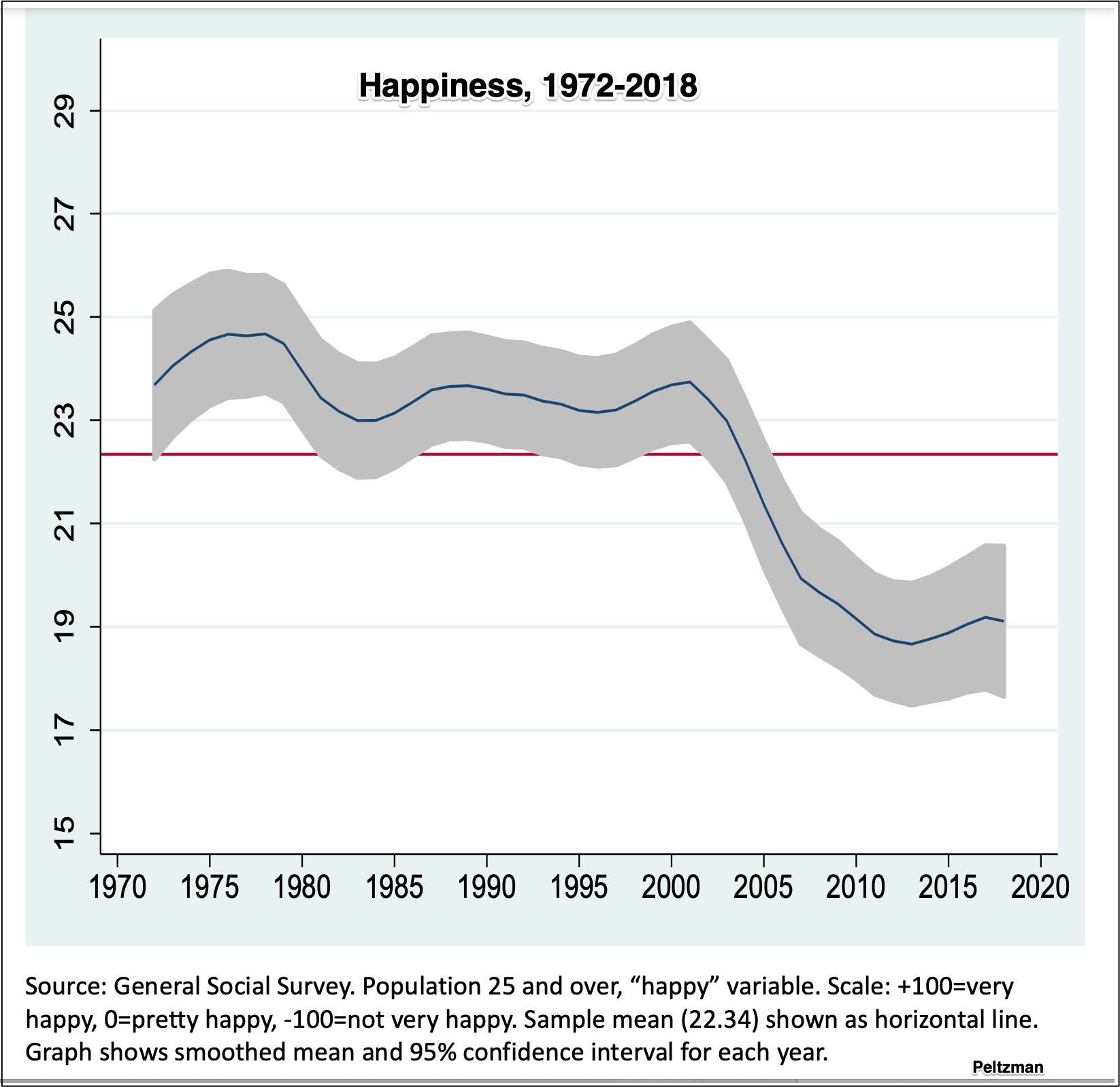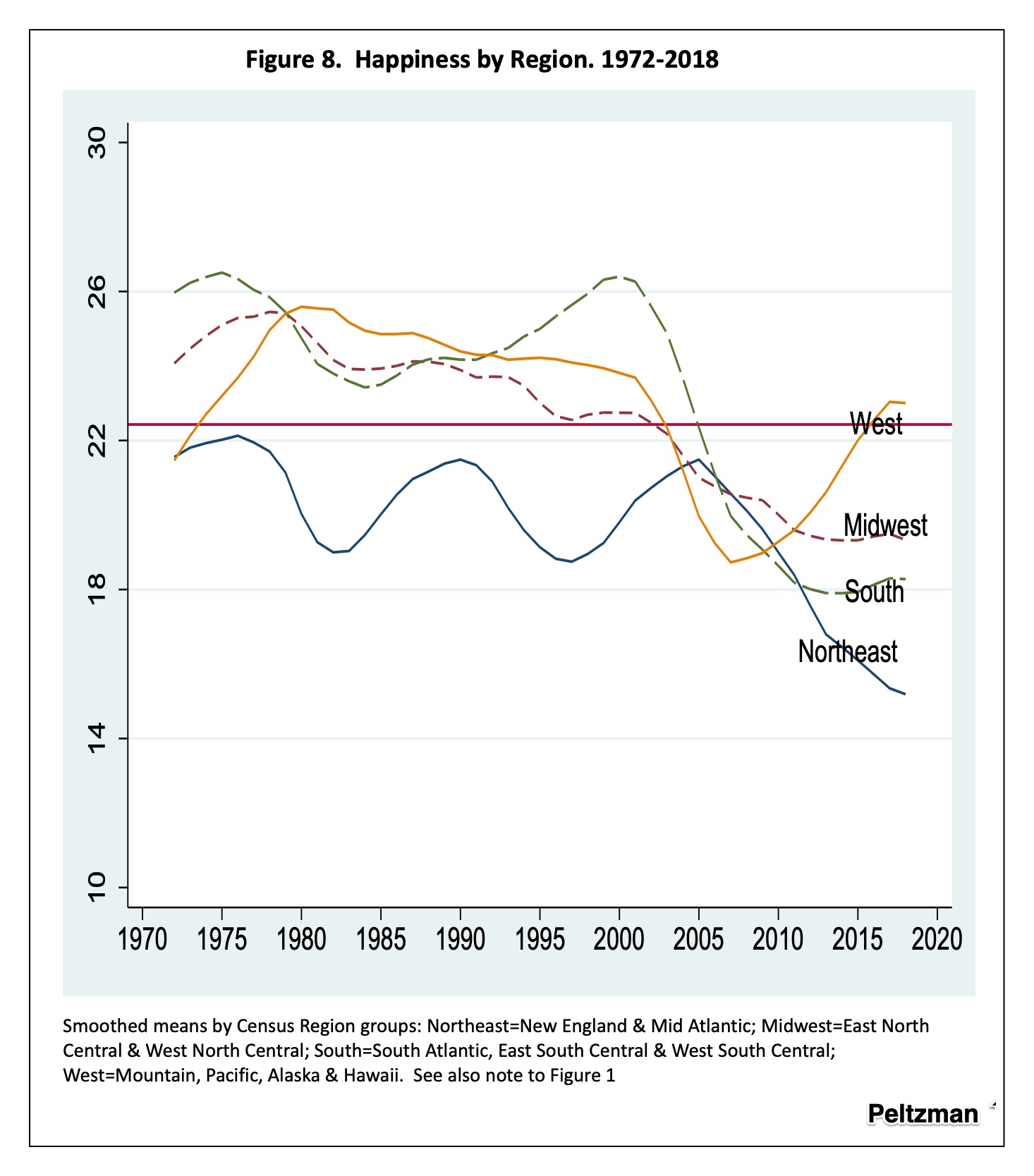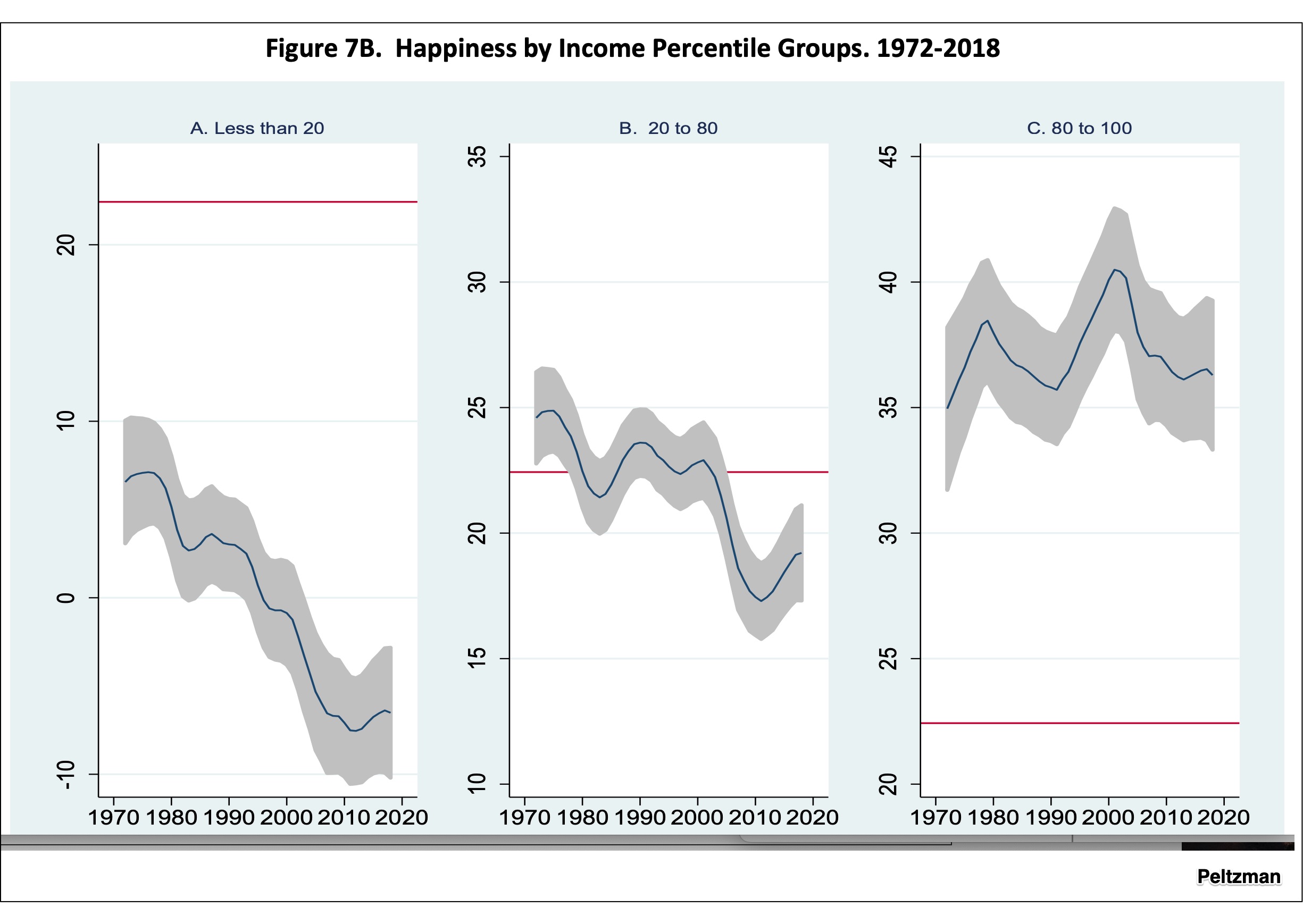Reporting what makes us happy, surveys place marriage at the top of the list.
But, of course, there is so much more.
Sources of Happiness
As economists, we like to know what makes people happy. Then, we can suggest incentives that generate the most wellbeing.
The classic happiness study came from Richard Easterlin in 1974. Comparing happiness in more and less affluent countries, he concluded that money made little difference. However, inside one nation, income increases, up to $75,000 ($491,055.26 today), can make people feel good. His conclusions are known as the Easterlin Paradox.
Now, echoing and sometimes criticizing past studies that move beyond Dr. Easterlin, Chicago economist Sam Peltzman summarized what makes us happy.
He starts by showing us that we are less happy now than in the past:

Then, he moved onward to topics that included marriage, gender, and geography.
Marriage
Asking who professes the most self-reported happiness, the answers from married people displayed that they were at least 30 points happier than their unmarried contemporaries. Still, Dr. Peltzman is not sure what came first, the marriage or the smiles. As he explains, it is possible that, tougher to live with, less happy people marry less. Or, marriage could indeed make us happier.
The not-married survey tended toward equal happy and sad responses. By contrast, those with a spouse created a “happiness landslide”:

Gender
Here, Dr. Peltzman primarily asks why female happiness trends downward for the past 50 years while male happiness declined only recently. (The answers, I suspect, say a lot about cultural and economic changes.):

As for where you live, maybe we should move Westward:

Our Bottom Line: The Easterlin Paradox
Soon though, Dr. Peltzman again asks if money makes us happy.
Confirming what Easterlin said about the impact of income, Peltzman believes that for an individual, income and happiness show a positive connection but then, looking at two disparate times we have a flatter curve that reflects a minimal money impact.
Paralleling Easterlin, you can see below that the top quintile is no happier today than it was 50 years ago:

So, where are we? I continue to have doubts about self-reported happiness. However, it does make sense to learn how we can make our society better.
My sources and more: Thanks to Marginal Revolution for alerting me to the new Sam Peltzman paper because I’ve always enjoyed his research. And now, his most recent look at happiness was equally interesting. Meanwhile, at econlife, we have looked happiness studies, here and here,






